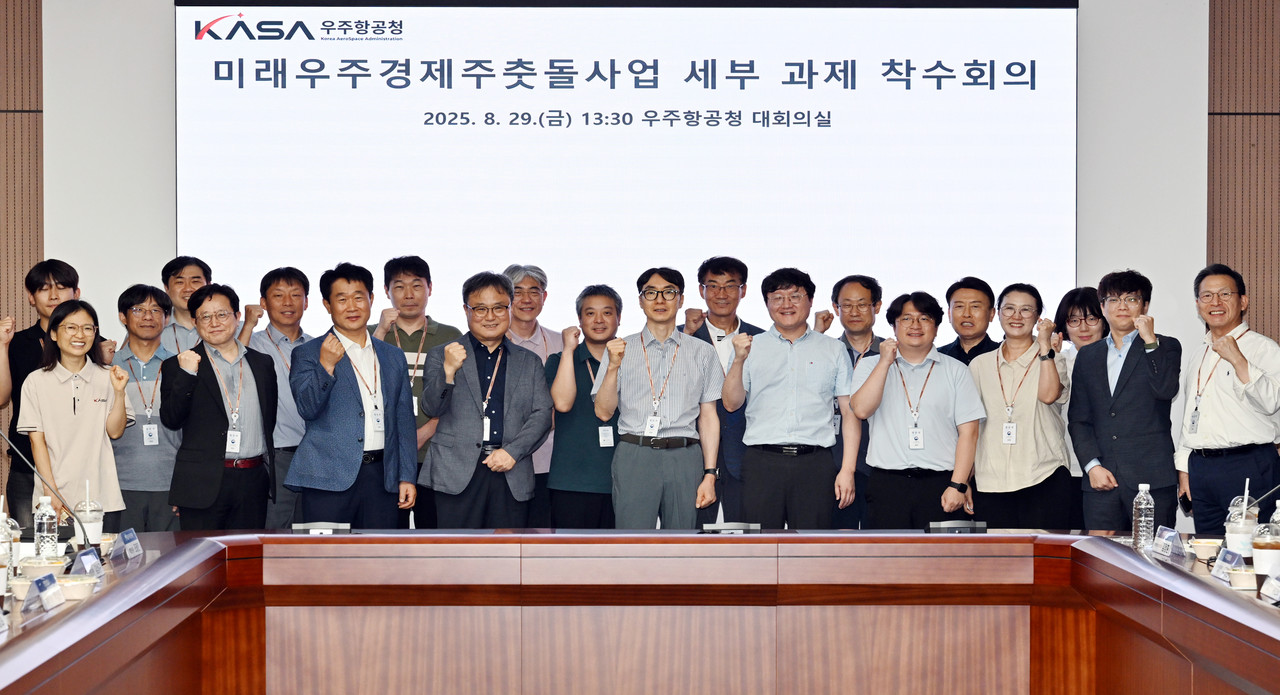News
Korea to Localize Space Components, KASA Kicks Off Space Economy Cornerstone Project
Development of Six Types of Space-Grade Components for Localization
Goal: Development of Test Methods for Space Radiation Environment

The Korea Aerospace Administration and the Korea Aerospace Research Institute have launched a project to localize space components. [Photo = Korea Aerospace Administration]
The Korea Aerospace Administration (Administrator Yoon Young-bin) and the Korea Aerospace Research Institute (President Lee Sang-chul) held a kick-off meeting on the 29th for the “Future Space Economy Cornerstone Project” and officially launched efforts to localize space components.
The Cornerstone Project aims to achieve the localization of space-grade components and develop test methods for the space radiation environment. A total budget of 22.5 billion KRW (approx. USD 16 million) will be invested over five years, from 2024 to 2029.
The component localization initiative targets six key components—three passive and three active—that are currently entirely dependent on imports, with the goal of developing them up to the mass production and supply stage.
Starting in 2025, development will begin on three items:
D-sub connectors
Multilayer Ceramic Capacitors (MLCCs)
Temperature-Compensated Crystal Oscillators (TCXOs)
The remaining three components will be pursued beginning in 2026.
The development of space radiation environment test methods aims to enable both proton-based and heavy-ion-based testing using domestic facilities. Proton testing will be carried out by the Korea Atomic Energy Research Institute and the Korea Testing Laboratory, while heavy-ion testing will be conducted by the Korea Institute of Science and Technology (KIST) and QRT.
Han Chang-heon, Director of the Aerospace Industry Bureau at the Korea Aerospace Administration, stated:
“This project will mitigate overseas supply risks for space-grade components and contribute to the expansion of Korea’s domestic space industry market by securing technological self-reliance in core parts. We will continue to do our utmost for the growth and development of the space industry.”
Meanwhile, through the “Space Development Infrastructure and Outcome Expansion Project”, which concluded last year, the Administration successfully localized a total of eight components—two active and six passive. These components will be mounted on the first space verification satellite aboard the fourth launch of the Nuri rocket, scheduled for November, to undergo performance validation in the space environment.
The localized components include:
Memory (KAIST, MID), Magnetics (KTL, Sensorpia), Heaters (Paru Printed Electronics, SpaceK, SeoulTech) , Thermistors (Ratron, Hanseo Univ., Satrec I),
Diodes (KARI, Sigetronics, QRT, MEMSPAC), Connectors (Union Precision, SpaceK), Capacitors (Samwha Capacitor, KITECH), Resistors (Smart Electronics, UNIST)
HelloDD, h951009@hellodd.com, August 29, 2025


